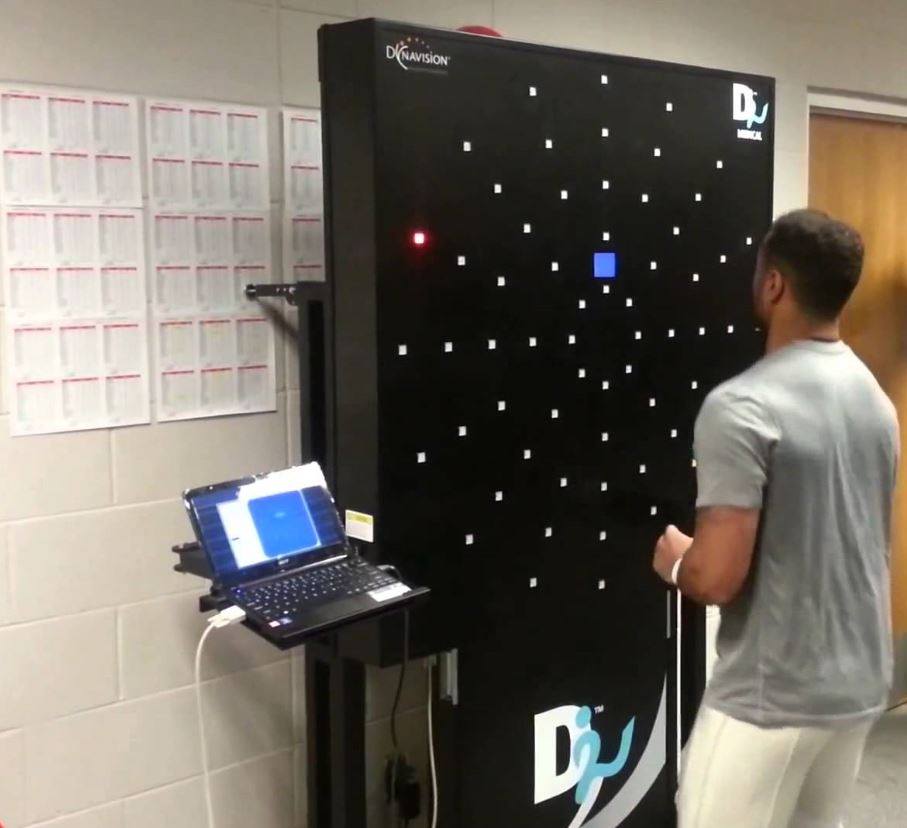Research shows the Dynavision D2 is effective for treating the visual, cognitive and physical impairments resulting from brain injury.
The D2™ is also a comprehensive tool for concussion management. Numerous programmable options facilitate individualized training programs. Performance data is quantitative and objective for accurate baselinetesting, progress monitoring and return to play decision making.
The Dynavision D2 training is designed to improve vision processing, speed of processing, eye hand coordination, visual fields, ocular motor performance and overall awareness. Drills are done as part of regular weight and conditioning training with the players going through circuits of exercises.
During the training, the complexity and demands of the training are increased to be fun, but challenging. Many of the vision training methods produce quantitative scores; the scores were recorded and high scores were posted and challenged

What is the Dynavision?
The Dynavision is a large, computerized light board containing 64 small square target
buttons that light up randomly one at a time. The user searches the board to locate the lighted button. Once located, the client touches the button to extinguish the light. The target button beeps when it is touched and another button is randomly illuminated in a new location on the board.
The client attempts to extinguish as many targets as possible during each program.
An LED rectangular display is positioned in the center of the board and can be programmed to periodically display numerals 1-7 during an exercise run. The therapist
can use this option to test and challenge the client’s ability to divide and shift attention between the center of the board to locate and read out the number and the periphery of the board to hit the lights. It can also be programmed to display lights in only one quadrant, or multiple quadrants in combination, and use the entire board or only the inner the rings.
The therapist programs the board by selecting options that control the modes, light speeds, working areas, and speed and number of digits displayed in the center panel. The board is mounted on a wall and can be adjusted up or down to accommodate individual differences in height and for clients in wheelchairs.
Because of the numerous programming options, the therapist can program the board to provide the client with the desired assessment and training challenge.
Watch the video to see the D2 in action.
